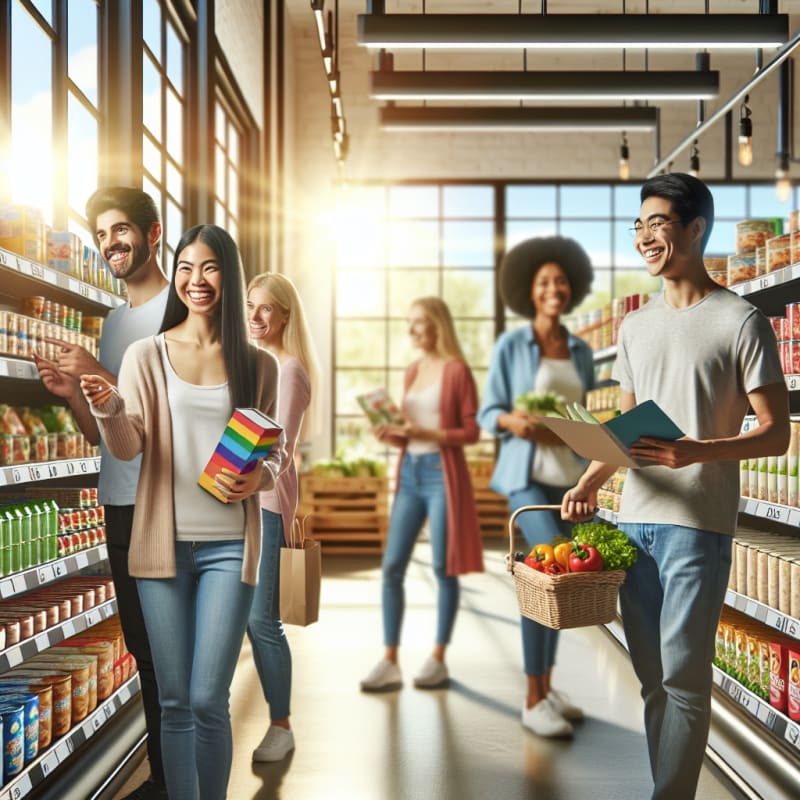How To Scan Food Labels For Artificial Additives: A Parent’s Guide With Food Scan Genius
By The Editors | Updated June 2024
One Tuesday evening, Sarah, a mother of two in Chicago, prepared her son’s favorite pasta for dinner. Within an hour, her youngest, Ethan, developed red blotches and stomach pain. The culprit? An artificial additive in the pasta sauce—one she hadn’t noticed on the label.
For millions of parents and consumers, deciphering food labels is more than a chore—it’s a critical step to protect loved ones from unexpected reactions. With the rise of food sensitivities and allergies, knowing how to scan food labels for artificial additives is essential. In this guide, you’ll learn to decode ingredient lists, understand global labeling laws, and discover how the Food Scan Genius app can make shopping safer and easier.
Why Artificial Additives Matter
Artificial additives—including colors, preservatives, and flavor enhancers—are widely used in processed foods to improve taste, appearance, and shelf life. However, some additives have been linked to allergic reactions, hyperactivity in children, and other health concerns (FDA, EFSA, PubMed).
- Food dyes (e.g., Red 40, Yellow 5): Associated with hyperactivity in some children
- Preservatives (e.g., sodium benzoate, BHA, BHT): May trigger allergic reactions
- Flavor enhancers (e.g., MSG): Can cause headaches or sensitivities in susceptible individuals
Recent news reports, such as The New York Times and CNN Health, highlight growing concerns about the long-term effects of these substances, especially in children.
Understanding Food Labels: The Basics
Food labels are regulated to help consumers make informed choices, but the information can be complex. Here’s how to approach a typical ingredient list:
- Start with the ingredient list: Ingredients are listed in descending order by weight.
- Look for unfamiliar terms: Many additives have chemical-sounding names or codes (e.g., E102, FD&C Yellow No. 5).
- Check for allergen statements: U.S. law requires the disclosure of the top 9 allergens, but not all additives are allergens.
| Additive | US Label Name | EU Label Code | Potential Effects |
|---|---|---|---|
| Tartrazine | Yellow 5 | E102 | Hyperactivity, allergies |
| Sodium Benzoate | Sodium Benzoate | E211 | Asthma, skin rash |
| Monosodium Glutamate | MSG | E621 | Headache, nausea |
| Butylated Hydroxyanisole | BHA | E320 | Possible carcinogen |
US vs EU: Comparing Labeling Laws and Ingredient Disclosure
Food labeling requirements differ significantly between the United States and the European Union:
- United States (FDA): Requires food manufacturers to list all ingredients, but some additives can be grouped under generic terms like “artificial flavors.” Only the top 9 allergens must be declared (FDA Food Allergies).
- European Union (EFSA): Mandates clear labeling of all additives by name and E-number. Additives linked to hyperactivity (e.g., E102, E110) must carry warning statements (EFSA Food Additives).
For example, a candy containing Tartrazine must state “E102” in the EU and may include a warning about possible effects on activity and attention in children. In the US, it may simply be listed as “Yellow 5” without a warning.
Key Takeaway: If you shop internationally or have family members with sensitivities, understanding both systems is vital.
How To Scan Food Labels For Artificial Additives: Step-by-Step
Whether you’re in a grocery aisle or shopping online, follow these steps to identify potential artificial additives:
- Read the entire ingredient list. Look for chemical names, color codes, or unfamiliar terms.
- Identify additive codes. In the EU, look for E-numbers (e.g., E102). In the US, check for names like “Yellow 5,” “BHA,” or “artificial flavors.”
- Check for allergen or warning statements. Especially if shopping in the EU, look for required warnings about hyperactivity or allergies.
- Use a scanner app for quick results. Apps like Food Scan Genius can instantly flag additives and allergens.
- Research unfamiliar ingredients. Use trusted sources such as the FDA or EFSA.
Pro Tip: Some additives may be listed under multiple names or grouped with similar substances. Always double-check if you’re unsure.
Food Scan Genius: Your Pocket Guide to Safer Shopping
For anyone managing food sensitivities, allergies, or dietary preferences, the Food Scan Genius app is a game-changer. Here’s how it works:
- Instant barcode scanning: Point your phone at any packaged food. The app highlights artificial additives and allergens in seconds.
- Personalized profiles: Set your dietary preferences (e.g., gluten-free, vegan, dye-free) and get instant alerts for ingredients you wish to avoid.
- Global database: Covers US and EU products, translating E-numbers and ingredient names for cross-border shopping.
- Scientific references: Each flagged additive links to research and regulatory guidance from FDA, EFSA, and PubMed.
User Testimonial: “As a parent of a child with food sensitivities, Food Scan Genius has changed the way I shop. I can scan any product, anywhere, and know instantly if it’s safe for my family. I recommend it to every parent!” – Jessica D., Boston
Download Food Scan Genius today and shop with confidence.
Q&A: Common Questions About Scanning Food Labels for Artificial Additives
What are the most common artificial additives to avoid?
The most common include food dyes (Red 40, Yellow 5), preservatives (BHA, BHT, sodium benzoate), and flavor enhancers (MSG). Sensitivity varies, so check labels and consult your healthcare provider.
How can I quickly identify artificial additives on a label?
Look for chemical names, color codes (like E102 or Yellow 5), and terms such as “artificial flavors” or “preservatives.” Apps like Food Scan Genius can scan and flag these instantly.
Are artificial additives always listed by name?
Not always. In the US, some can be grouped under generic terms. In the EU, E-numbers are used. Always read the full ingredient list and use a reliable scanner app for clarity.
Is it safe to eat foods with artificial additives?
Most additives are considered safe in regulated amounts, but some people may experience sensitivities or allergic reactions. Stay informed and consult reputable sources like the FDA or EFSA.
How does Food Scan Genius differ from other scanner apps?
Food Scan Genius offers real-time scanning, personalized alerts, and cross-references with scientific and regulatory data for both US and EU products.
Conclusion: Empowering Your Family’s Food Choices
Sarah’s story is a reminder that a simple meal can become a health hazard if we overlook hidden additives. By learning how to scan food labels for artificial additives, you protect your family from unwanted reactions and make informed, confident choices.
With evolving food laws and global supply chains, tools like Food Scan Genius put the power of information in your pocket. Whether you’re shopping in the US or the EU, you can scan, understand, and choose the best products for your needs—every time.
Ready to take control of your food choices? Download Food Scan Genius and transform your next grocery trip into a safe, stress-free experience.
References
- FDA: Overview of Food Ingredients, Additives & Colors
- EFSA: Food Additives
- PubMed: Food Additives and Child Health
- The New York Times: Food Additives and Children
- CNN Health: Food Additives and Labeling





